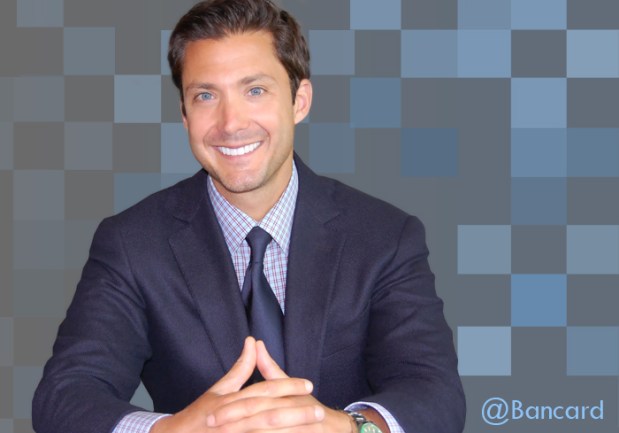Advice To PayPal: Don’t Forget Main Street

North American Bancard CEO Marc Gardner is not a big fan of shopping at large national retailers, saying that he much prefers a local boutique where personalized customer service is a much higher priority. The problem is that when he looks at his PayPal mobile app, coupons for “behemoth” retail chains is all that he typically sees.
Therein lies one of the key problems—and opportunities–with mobile payment today – how to make mobile and digital relevant to the “main street” merchant. Gardner recently chatted with MPD CEO Karen Webster to explore where mobile payment needs to go to grow.
Gardner and Webster started the conversation where most of the conversations since Tuesday of this week started: what changes—if any—the announcement that PayPal will be spun out of eBay will have on payments generally. Gardner said he saw the move as very positive for payments, but especially favorable for PayPal. For starters, no longer being a part of the big behemoth eBay is a big win.
“If you’re part of a large organization, strategic decisions become much more complex. And there’s much greater level of management,”Gardner said. “The decision-making timeframes are often very elongated. So I think they will be more nimble.”
But when it comes to being nimble in the small merchant space, Gardner stressed a sharp focus was needed on the one word that gets consumers beating a path to the retailers’ doors: incentives. Customized, relevant, compelling incentives, Gardner argued —are an essential part of all mobile payment schemes to get consumers in the habit of using their mobile apps regularly, but especially for PayPal. Why PayPal? Because, Gardner feels, that they are in the best position to seize the huge opportunity to look beyond the country’s largest retail chains and offerthese incentives to small local businesses. The“mom-and-pops” Gardner contends, have far fewer options for their marketing dollars and the benefits are much more significant for them. How many shoppers will “discover” a Target or a Walmart through a mobile app? But how many could find a great local merchant that they might have never heard of?
He presented a compelling use case to Webster. “So say that Bob’s Burgers is opening up. (The owner of Bob’s Burgers) can’t advertise in the Yellow Pages anymore. Valpak’s dead. He doesn’t know how to do Google Adwords. He doesn’t have an IT department. Facebook launched their equivalent of Google AdWords, but you need to be pretty IT savvy or have an IT resource to navigate through those AdWords campaigns,” Gardner said. “I think that if Facebook made a very very simple interface or did it for the merchant, especially the first time they enrolled,” it would make a huge difference. But they don’t so the lack of smaller retailers represented by mobile discounts is one that feeds on itself. Not only do next-to-no shoppers get encouraged to visit those smaller stores, but those stores see no mobile traffic and draw the conclusion that mobile is irrelevant to their business.
Gardner, a PayPal partner, said, “When we did a focus group on integrating PayPal Check-In, the number one thing we heard—and we shared this with PayPal—is that these small retailers—the average SMB that does $10,000/month in plastic acceptance—said there’s no demand.” Merchants, he said, kept saying that “no one has ever walked into our store and asked, ‘Can we pay with PayPal?’ Just because these retailers have the ability to accept PayPal doesn’t mean the account holder demand is there.”
“My understanding is that PayPay has more than 100 million PayPal users in the U.S. alone. That’s a third of our population. It’s a lot of people,” Gardner said. “If I wanted to get those people using my wallet, my stored value, to buy goods and services in the offline world, I would incentive their cardholders with something that would be very very enticing, to go into a brick and mortar establishment.”
Gardner told Webster that it would be wise for everyone to recall, as he did, a basic lesson from his first economics class—everything revolves about demand generation—and that certainly holds true with mobile payments today. “There is no demand right now for alternative payment types within brick and mortar, especially the small ones. So if you want to create that demand, publish an offer to 100 million account holders and get them looking for these coupons and these offers that they can now go use at these small businesses that are accepting PayPal.”
The CEO stressed that the next couple of years will see a lot of acceptance growth for key mobile payment technologies—especially EMV and NFC—but he pointed to the Apple Pay rollout as a vivid demonstration of a technology truism: timing is everything.
He cited as an example a biometric company from several years ago called PayByTouch, which had substantial investments but ended up having to shut down.
“Remember PayByTouch?” Gardner asked Webster. “They blew through hundreds of millions of dollars of capital,” he said, but it was too early and consumers (and, for that matter, retailers) weren’t ready to embrace biometrics. Fast forward to September 2014 and Apple rolls out Apple Pay with TouchID – biometrics – to overwhelmingly favorably buzz.
“Now biometric payments are the cool thing with Apple. I think timing is really really important in technology,” he said. “Being too early is probably just as bad as being too late.”
Marc Gardner is founder, president, and CEO of North American Bancard, a multi-faceted payment solutions provider dedicated to delivering the latest payments technology with the highest level of customer service. Headquartered in Troy, Michigan, North American Bancard ranks as one of the industry’s top 30 acquirers. North American Bancard was also named 2014 ISO of the Year at the Electronic Transactions Association (ETA) Star Awards. In 2010 NAB launched PayAnywhere, a mobile point of sale solution designed for businesses of any size.
